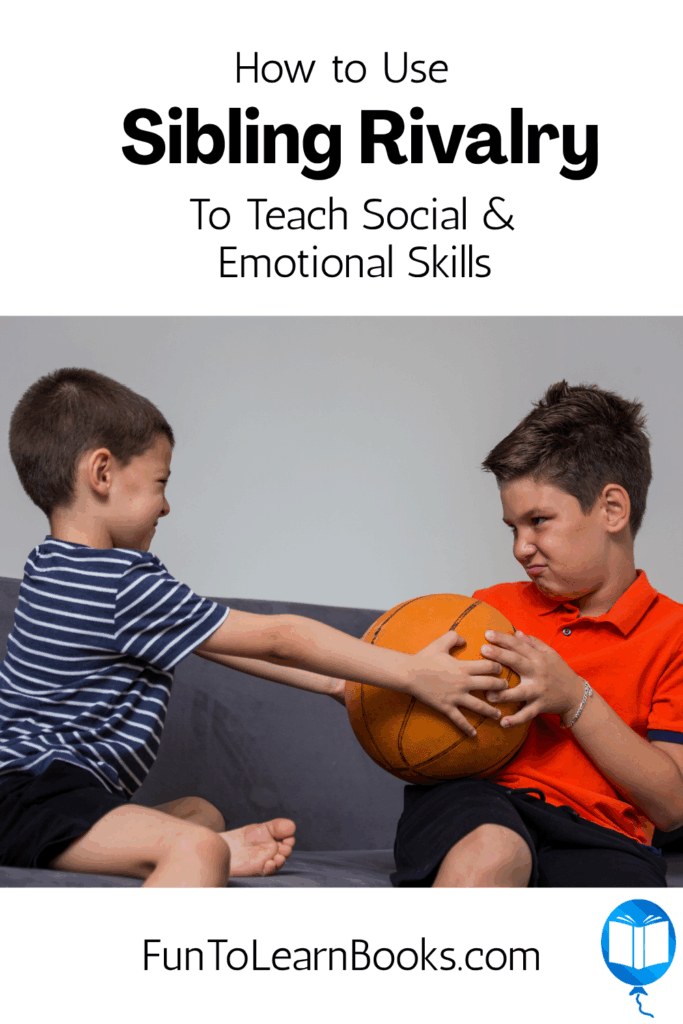When your kids are fighting, it’s demoralizing. You love them deeply, and when they say and do things to hurt each other, it can feel like a personal wound. As parents, we receive a lot of conflicting advice about how to handle sibling conflict. In this post, I want to share three practical approaches for turning these stressful moments into powerful lessons in social and emotional skills.
1. Detach Emotionally (Just Enough)
One of the first things parents do when their kids are fighting is to turn inward:
“What does this say about me?”
“Am I playing favorites?”
“Is this my fault?”
These questions can be helpful—but only up to a point. It’s important to reflect on how we parent, but we can’t let every sibling squabble turn into an identity crisis.
I had to learn this myself. Just as I wouldn’t automatically assume that a child struggling with long division meant I had failed as a math teacher, I had to stop assuming that every fight between my kids was a sign of parenting failure. Sibling conflict is a separate issue—a skill that needs to be learned, just like math or reading.
Let go of the shame and see sibling rivalry as an opportunity to teach.
2. Build a Positive Self-Concept
Many conflicts between siblings are rooted in poor self-esteem. It’s hard to love others when you don’t love yourself. We’ve all heard the saying “hurt people hurt people.” Kids who feel bad about themselves often try to make their siblings feel bad too.
There are three ways we can help our children develop a healthy self-concept:
a. Give Specific Praise
Praise children for what they do, not traits they can’t control. Instead of saying, “You’re so pretty,” say, “You worked hard practicing for the dance recital.” Children can’t control their appearance, but they can choose to be diligent again in the future.
b. Model and Encourage Positive Self-Talk
When your child says, “I can’t do long division,” encourage a reframe like, “I’m learning how to do long division.” Over time, these reframes become internalized, helping your child believe in their ability to grow and improve.
c. Improve Your Own Self-Talk
If we speak negatively about ourselves, our kids are likely to mirror that. If we have a habit of saying we did something stupid, reframe it to say, “I made a mistake, but I learned something from it.” Building our children’s confidence starts with modeling it ourselves.
3. Teach Conflict Resolution Skills
Sibling rivalry offers the perfect training ground for teaching lifelong conflict resolution skills. Whether it’s a disagreement with a friend, a college roommate, a spouse, or a coworker, your child will need these tools.
The common advice is to either “let them work it out” or “force them to get along.” While this might work in the short term, it doesn’t actually teach kids how to resolve conflict. If they knew how, they wouldn’t keep fighting.
Here’s a simple process to walk them through:
Step 1: Teach Healthy Communication (Mirroring Technique)
Most disagreements stem from miscommunication. One child says their sibling is being selfish with the game system; the other says they were willing to let their sibling play too. Instead of jumping in with a solution, teach your kids to mirror one another.
Try the Right to Speak strategy:
- Flip a coin to choose who speaks first.
- The speaker shares their side of the story.
- The listener must ask 1–3 questions that result in “yes” answers, proving they understood the speaker’s perspective.
- Then they switch roles.
Just being heard can often dissolve the tension.
Step 2: Teach Collaborative Problem Solving
If the issue remains, move on to brainstorming solutions. Ask both kids to come up with as many ideas as possible. If they’re reluctant, offer a “worst-case” solution (like both losing access to the game system) and explain that if they don’t brainstorm, that’s the fallback.
Brainstorming isn’t about judging ideas—yet. Once you have a list, walk through each option together and discuss which ones are fair and workable. Choose one solution to try, and set a date to review how it’s going. Let them know you can try something else if needed.
This process builds decision-making, empathy, and collaboration.
The Big Picture
Using sibling rivalry to teach social and emotional skills isn’t quick or easy—but it’s worth it. Your kids will encounter people much harder to live with than their siblings. What better place to practice than at home?
Give your kids the gift of learning how to handle conflict with love, respect, and problem-solving—and give yourself grace in the process.
Fun activities for learning conflict resolution between siblings are included in Training Aliens, Level 1.
To read more about developing these skills, including our upcoming post on helping your child deal with disappointment, check this page for updates.


